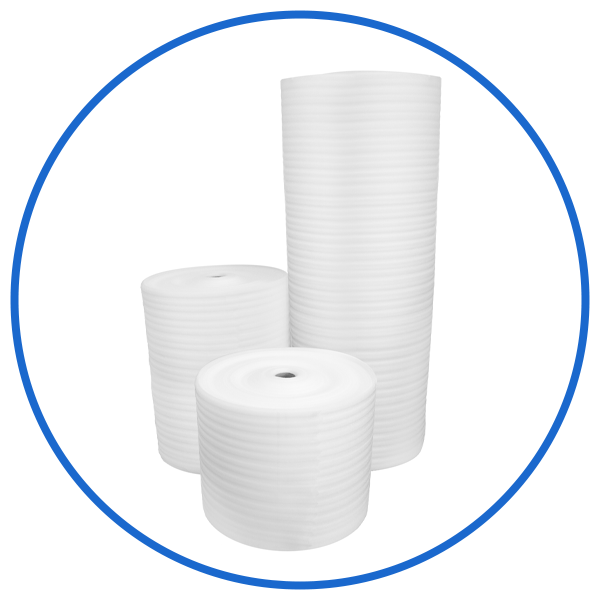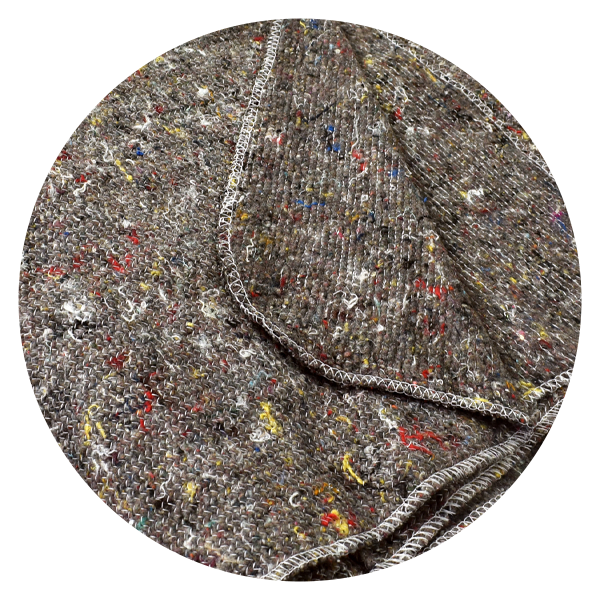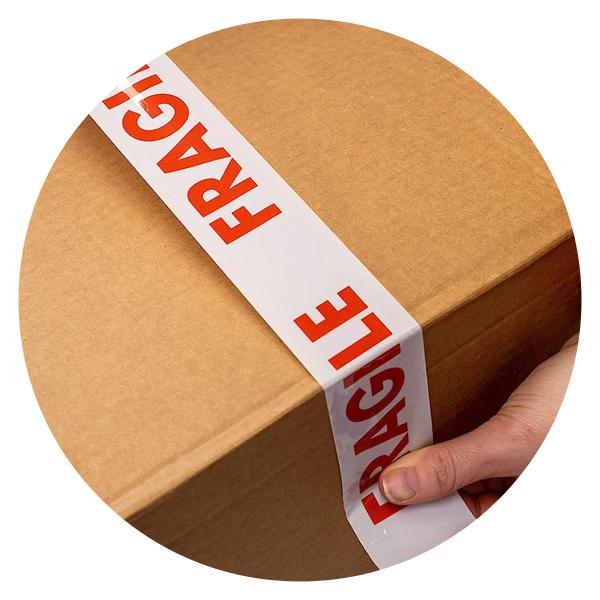Moving home can be an exciting but challenging experience. One crucial aspect of a successful move is proper packaging. By using the right packaging supplies and techniques, you can ensure the safe transport of your belongings and make the unpacking process much smoother.
In this comprehensive guide, we will provide you with essential packaging tips on everything you’ll need for a successful home move.

Boxes & Containers
Firstly, you’ll need to select boxes and containers to hold your belongings in.
Consider the weight and fragility of the items you are packing, as well as the specific requirements of your belongings. This will help you make the right choices and ensure their safe transport. Heavier items, for instance, should be packed in smaller boxes to prevent them from becoming too heavy and potentially breaking.

Double Wall Boxes
Double wall boxes are known for their durability and strength and are widely used for removals. They are constructed with two layers of corrugated cardboard, providing extra protection for fragile items. These boxes are ideal for packing heavier objects, and items such as electronics, small appliances, and books. The double walls offer increased resistance to crushing or puncturing, minimising the risk of damage during the move.

Single Wall Boxes
Single wall boxes are constructed with a single layer of corrugated cardboard, making them lighter and more economical compared to double wall boxes. They are suitable for lighter items that don't require as much protection, such as clothing, linens, or lightweight kitchenware. Single wall boxes are versatile and come in various sizes, making them convenient for packing a wide range of items.

Removal Kits
Pre-packaged removal kits include a combination of different box sizes and packing materials. These convenient kits are designed to provide you with a variety of boxes and materials that cater to different needs during a move. Removal kits often include a mix of double wall boxes, single wall boxes, packing paper, bubble wrap, and packing tape.

Specialty Boxes
For delicate or fragile items, you may wish to opt for specialty boxes designed specifically for those belongings. Wardrobe garment boxes come fitted with a plastic rail ideal for hanging clothes, meaning you can transport your clothes without getting them creased or dirty. Archive boxes are perfect for storing important documents, while dish boxes with partitions provide excellent protection for kitchenware. Book wrap boxes are great for protecting books and items like CDs/DVDs, while golf club boxes are designed for storing longer, thin items such as umbrellas, cricket bats, and of course, golf clubs.

Protective Packaging Materials
Protective packaging materials play a vital role in keeping your belongings safe inside your boxes during the move. Using the right packaging materials is crucial to preventing bumps and scrapes during transport.
Make sure to use an adequate amount of protective packaging to guarantee the safety of your belongings.

Bubble Wrap
Bubble wrap is a classic choice for protecting fragile items. It consists of plastic sheets filled with air-filled bubbles that provide cushioning and shock absorption. When packing delicate items such as glassware, ceramics, or electronics, wrap each item individually with bubble wrap. Secure the wrap with packaging tape to keep it in place.

Foam Wrap
Foam wrap is another effective option for providing cushioning and protection. It is made of lightweight foam material that can be wrapped around fragile items or used as a filler to fill empty spaces within boxes. Foam wrap is especially useful for items that require additional padding, such as picture frames, mirrors, or artwork.

Packing Paper
Packing paper, such as newspaper offcuts & acid free tissue paper, offers a versatile and cost-effective protective solution, providing an extra layer of protection while minimising bulk. It is ideal for wrapping delicate items that don't require as much cushioning, such as clothing, linens, or non-fragile kitchenware. Packing paper acts as a barrier between items, preventing them from rubbing against each other and potentially causing scratches or damage.

Loose Fill/Void Fill
Loose fill or void fill materials are used to fill empty spaces within boxes to prevent items from shifting during transportation. These materials include packing peanuts, air pillows, or crumpled paper. When using loose fill, ensure that it is evenly distributed to provide support and stability. It helps absorb shocks and minimises the risk of breakage or damage caused by items moving around inside the box.

Padding & Cushioning
Furniture and larger items require extra protection to avoid scratches, dents, or other damages during transport. Proper padding and cushioning are essential.

Furniture Covers
Furniture covers are a must-have for protecting sofas, mattresses, chairs, and other upholstered furniture during a move. These covers are typically made of durable, water-resistant material that shields the furniture from dust, dirt, and potential bumps, scratches, and tears during transit. Make sure to securely wrap the covers around the furniture and secure them in place with tape or ties.

Moving Blankets
Moving blankets are thick, heavy-duty blankets specifically designed for protecting larger items during a move. They provide cushioning and insulation against scratches, dents, and other damages. Wrap moving blankets around wooden furniture, appliances, mirrors, or any other bulky items. Secure the blankets with tape or ties to keep them in place.

Polystyrene Sheets/Corners
Polystyrene sheets and corners provide excellent additional protection for fragile or delicate items. These foam-based materials can be cut to size and placed between items or on the corners to absorb impacts and prevent damage. They provide an extra layer of cushioning and help distribute the force of any impacts, reducing the risk of damage.

Edge/Corner Protection
Fragile edges and corners of furniture, mirrors, or artwork are susceptible to damage during a move. To prevent any accidents, use edge and corner protection. These specialised foam or plastic protectors are designed to fit securely over vulnerable edges and corners, providing an additional layer of cushioning and absorbing impacts.

Tapes for Securing & Sealing
Securely sealing your boxes is crucial to prevent accidental openings and protect the contents, helping to ensure the safety and integrity of your items during a move.
When sealing your boxes, we recommend reinforcing the bottom with an extra strip of tape to ensure it can withstand the weight of the items inside. Apply tape along the seams, overlapping the edges for added strength and security.

Packing Tapes
Two commonly used packing tapes are buff tape and clear tape. Buff tape, also known as brown tape, is a strong and reliable packaging tape that provides excellent adhesion and durability. It is ideal for sealing boxes and securing heavier items. Clear tape, on the other hand, offers a transparent and neat appearance, making it useful for sealing boxes when you want to easily identify the contents.

Duct Tapes
Duct tape is a versatile adhesive tape that is known for its strength and durability. While it is not specifically designed for packaging, it can be used in certain situations where extra reinforcement is needed. Duct tape is particularly useful for securing oddly shaped items, reinforcing the edges of boxes, or providing temporary fixes during a move.

Extra-Strength Packing Tapes
For added security, consider using extra-strength packing tapes. These tapes are designed to provide superior adhesion and durability, making them ideal for securing heavy or bulky items. They often feature reinforced layers or special adhesives that ensure a strong bond, even in challenging conditions.

Labelling & Organisation
An organised packing system will save you time and frustration. It is essential for a smooth and efficient unpacking process and can help you locate specific items when unpacking and ensure nothing gets misplaced or left behind.

Use a Labeling System
Creating a clear labeling system is key to easily identify the contents of each box and the room it belongs to. Use a permanent marker or labels to write a brief description of the items inside each box. Include details such as "kitchen utensils" or "bedroom linens”, and label each box with the specific room it should be placed in.

Colour-Coding
Consider using a colour-coding system to further streamline the unpacking process. Assign a specific colour to each room, and use coloured labels, markers, or coloured tape to mark the corresponding boxes. For example, use blue for the kitchen, green for the bedroom, and red for the living room.

Inventory Checklist or Moving App
Maintaining an inventory checklist or using a moving app can be incredibly helpful in keeping track of your belongings. Create a detailed inventory of each box, listing the items packed inside, and assign a unique number or label to each box. As you unpack each box, mark it off the checklist or update the app to keep track of your progress.

Fragile Items & Special Handling
Make sure to clearly mark boxes containing fragile items. Use labels with the word "Fragile" or "Handle with Care" to alert yourself and others to exercise caution when handling those boxes. Additionally, if there are any boxes that require special handling, such as those containing hazardous materials or valuable items, clearly label them accordingly to ensure they receive the necessary attention.

Special Considerations
Certain items require special care and attention during packing to ensure their safe transport. Take extra precautions to ensure that these cherished or valuable items arrive at your new home in pristine condition:

Electronics
Electronics, such as computers, TVs, or gaming consoles, are often fragile and sensitive to shocks or impacts. These items should be packed in their original boxes whenever possible, as they are designed to provide the best protection, with foam inserts and custom compartments. If the original packaging is not available, use sturdy boxes and plenty of padding to protect them from damage, and label the boxes for handling.

Artwork, Mirrors & Paintings
Artwork, paintings, and mirrors require extra attention and care during packing to prevent damage. Wrap them in bubble wrap or foam wrap, paying special attention to the corners. For added protection, you can use corner protectors or custom-made cardboard corners. Place them in appropriately sized boxes, fill any gaps, and label them to ensure careful handling.

Antiques & Delicate Items
Antiques, delicate heirlooms, or valuable collectibles may require additional precautions and expertise when it comes to packing. In such cases, it is highly recommended to consult with professionals who specialise in packing and crating delicate items. Custom crating may be necessary for particularly fragile or valuable items.

Disposal & Recycling
After the move, responsibly dispose of packaging materials to reduce waste. Break down cardboard boxes and place them in recycling bins. Use recycling services provided by your local council or look for recycling drop-off points in your area.
If packaging materials are still in good condition, consider repurposing them for storage or future use. Bubble wrap and foam wrap can be saved for future moves or used for other purposes such as insulation or protection during DIY projects.






